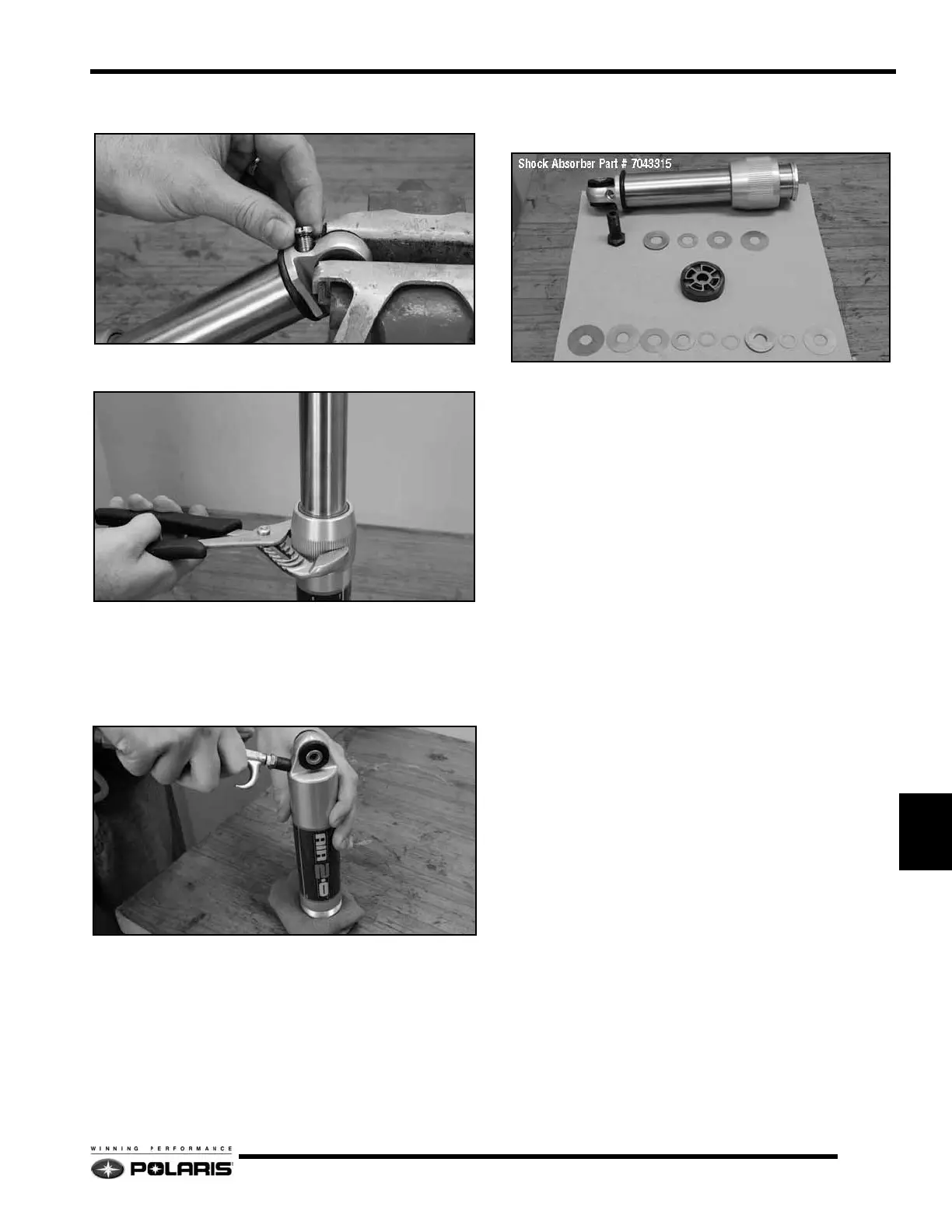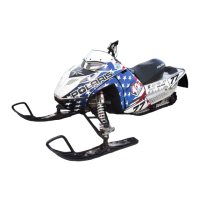9.17
Shocks
9
5. After all of the nitrogen gas has been allowed to escape
from the shock, remove both pressure valve assemblies.
6. Using interlocking channel pliers, loosen and remove the
cylinder head assembly.
7. Pour the oil out of the cylinder. Discard oil into an approved
container and dispose appropriately. Never reuse shock oil.
8. Using compressed air, invert the large diameter cylinder
over a clean shop towel. Pressurize the cylinder to 90 psi
to remove the IFP from the cylinder. Account for the
floating piston, wear band, and o-ring.
9. Place the 36mm piston (shock) rod upper mount in a soft-
jawed bench vise. Remove the piston valve and valve shim
assembly from the rod in the sequence of disassembly.
10. Remove the rod head assembly and spring from the rod
shaft.
11. Again, using compressed air, invert the rod shaft over a
clean shop towel. Pressurize the cylinder to 90 psi to
remove the IFP from the cylinder. Account for the floating
piston and o-ring.
12. With the shock disassembled, inspect the following items:
• 36mm piston rod for straightness, nicks, or burrs.
• Cylinder head assembly / bearing.
• Inside of shock body for scratches, burs, or excessive
wear.
• Teflon piston and IFP wear band for cuts, chipped or
nicked edges, or excessive wear.
• O-rings for nicks, cuts, or cracks.
• Valve discs for kinks or waves.
